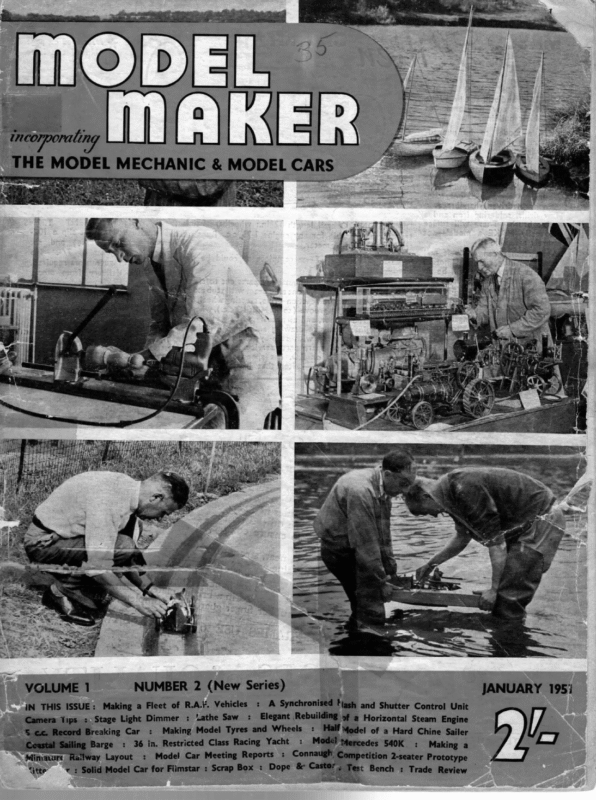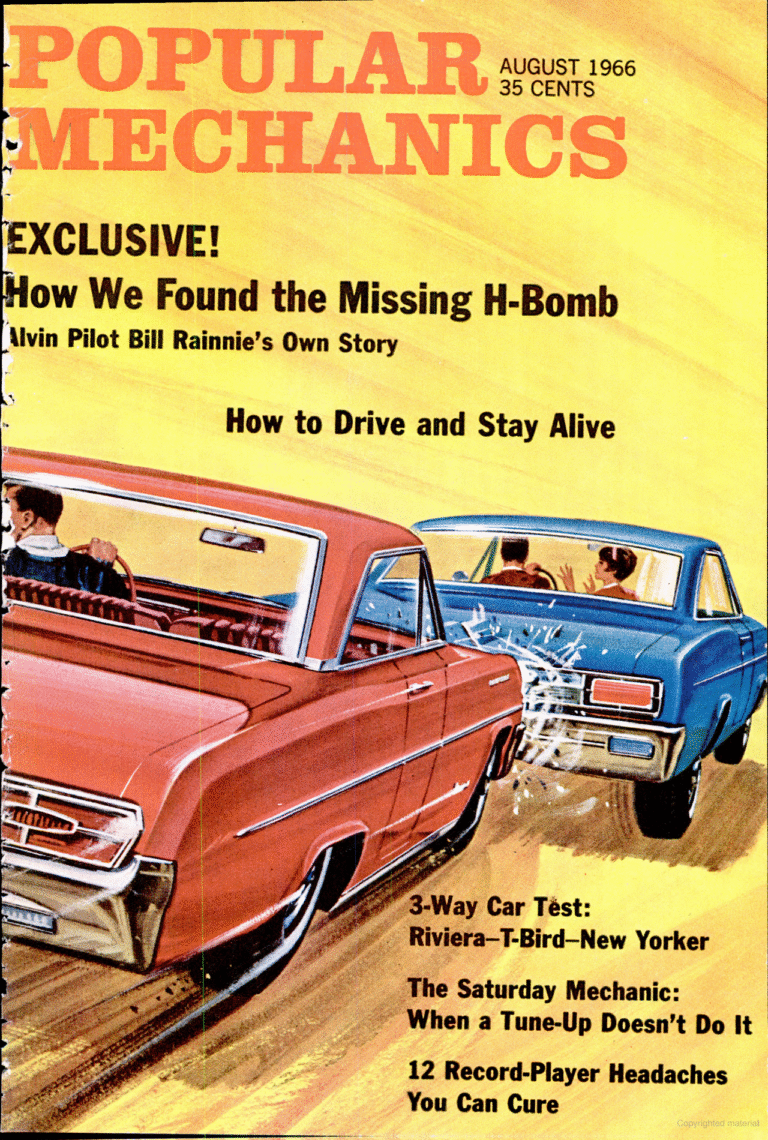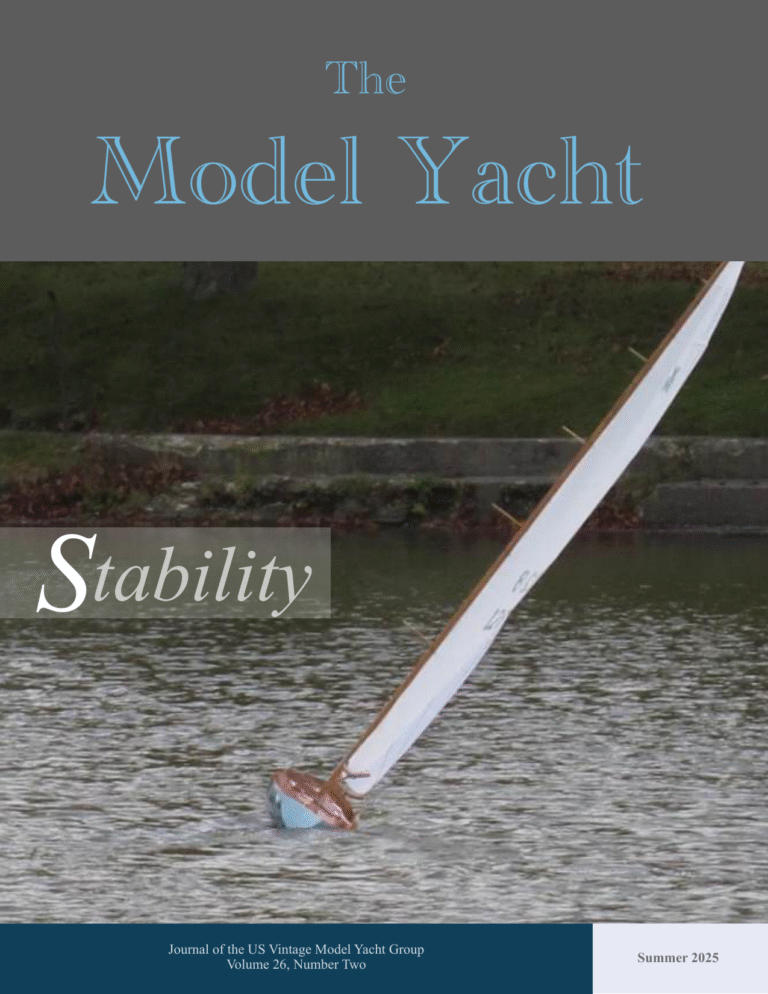Na MODEL MAKER “LADY BETTY” Part IV describes How to Make Sails for this 36 in. Restricted Class Yacht BY * Full size dyeline draw- ings of hull profiles, body plan and halfplan are price 7/éd. breadth available from the publishers. Further instalments will cover the Automatic Gear; Braine Steering Painting, nishing and polishing; Theory Practice of Yacht Var- French and Model Sailing. “THE primary function of a sail is to propel the mo- del, but to achieve this object in the most efficient manner other factors enter into the matter. It is thought by many that the wind blowing against the weather side of a sail causes the vessel to move forward. While this is true of a square sail it is not so in the case of a fore and aft sail. Of late years aerodynamics have entered into the calculation of a yacht’s sails, and wind tunnel tests have proved that the jib of a racing yacht causes an area of negative pressure to act on the leeward side of a Bermudian main sail. This negative pressure or, more correctly, suction, has from three to five times greater forward propelling momentum than gs wind pressure on the windward side of the sail. To obtain the maximum effort the jib foot should be one third of the length of the main boom, and ; should cover the latter by a quarter of the length of _ the boom, thus obtaining what is known in aero— circles as a “slot effect”. ‘es overlap is very apparent in any photograph = size racing yacht.- The “Dragon” class is ‘“‘SHIPWRIGHT’’ or trailing edge, as possible which is held by four battens. A more efficient method would be to cut our sail with a most pronounced roach, like a bird’s wing, but this would entail the fitting of many battens if we wish to prevent this curved edge from collapsing. We must, therefore, do. the best we can by cutting our sails as well as we are able to ensure that they retain their shape, and also remembering that the jib sail, e.g. if the main boom is set at 450 to the fore should always be slackened off more than the main sail, e.g. if the main boom is set at 45 deg. to the fore and aft centre line, the jib clue—or boom—must be at 50 deg. This is important to preserve the “slot” effect. Material for Sails. The first consideration is the selection of material. “Union Silk” is specially woven from the finest Egyptian cotton for model yacht sails and although in short supply is still procurable. Messrs. Lance and Mullett of Brighton, I believe,.can now supply. An enquiry dressed to the adfol- lowing , firms mentioning this book will receive courteous attention: — Messrs. Bassett Lowke Ltd., St. Andrew Street, Northampton. Messrs. Lance and Millett, 16 Meetinghouse. Lane, Brighton. The spinnaker should be made of lighter material and _ parachute silk is ad-
January 1951 In order to preserve the original shape of sails certain edges must be carefully taped with % in. linen tape as will be described later. A supply of large dress hooks and some 7s in. luff rings will also be required, the former from a drapers, but see that they are large ones; and the latter from the above firms. MAKING-UP. Fig. 25 is a reduced sail plan, but as the actual lengths of the various sides are given in the encircled figures together with a scale of inches the dimensions should be readily accessible. 1 16 12 B 146 78 93 OH 3456 ae ie ee ae Bed ESS oe Se SAIL AREA Fore MAIN SAIL TOTAL AREA — JENNY JIG A174 SQ.INS. 455 * « 629 JUMPER STR OR HOIST a 34 TO DECK = are the sail so allowfor the mi SPREADER ” 27% -—_——_—— -_— ‘ TO DECK. pese The best way to mark out the material is to pin it without stretching it to a table top or lino floor. Then with a soft BB pencil mark the outline allowing twice the width of the hem for turning in. Also allow ¢ in. of hollow in all luffs, i.e. the forward edge of the jib and that part of the main sail against the mast, as this ensures a flat setting. age cloak Sp unt ek 7lg S MAINSAIL A sewing machine should (eat | ER be used, and the help of a lady member of the household should be enlisted fer this part of the work. Use the smallest hemmer available, and silk is preferable to cotton for al! machine work. %” = ONE INCH. SCALE -—<—<--— These dimensions size of the finished when marking out ances must be made hem. S0"TO DECK wcofe FIG: 25. SAIL PLAN OF “LADY BETTYTM The jib is loose footed, and to prevent the foot SPINNAKER SHOW _IN DOTTED OUTLINE. is passed, being tightened by means of the jib halliards fitted to a double hook engaging with a screw eye on the mast. from rising it is cut with a pronounced curve which is taped with a straight tape from tack to clew, the rounded foot being hemmed only. The luff is taped, but the leach hemmed. The tack is lashed to the outboard end of the jib club, but the clew, or inboard end is stretched by means of a hook, line and bowser, the hook engaging with an eyeletted hole in the © clew. Luff rings are fitted through which the forestay 103 The main sail is taped at foot and luff. Cut the foot with 4 in. of hollow to ensure a good set. Fig. 5 shows the head of the main sail which is fitted with a metal head-board, the height of which must not exceed | in. To this head-board is attached the mainsail halliard.
MODEL MAKER . FIG: 5. || For taping use 3 in. best linen tape. Crease by folding in half lengthways and rubbing over the table edge. The edge of the sail to be taped should be folded in and placed between the edges of the folded tape, taking care to see that the edge goes right into the fold. Then MAST HEAD DETAILS. LADY BETTY. BURGEE ON WIRE LOOP FREE TOREVOLVE A. BOOM. B. DECK HOOK. C. \\ BACK STAY. FORE HAUL. D. BACK —. SHEET. HAUL. ~ F._EYE ON FORE SIDE OF MAST. G_ELASTIC. |] METAL HEAD BOARD. DIAGRAM _ ONLY. NOT TO SCALE. tack the binding at one end and using silk, not cotton, run a line of stitching down the outside of the fold and another near the folded edge. BY “SCREW EYE. All corners where ouihauls, halliards and_ other attachments are fitted must have very small metal eyelets punched in. Use eyeletting pliers if you possibly can, otherwise a centre punch on a metal block HOW TO SET THE SPINNAKER. THE SPINNAKER.—As already mentioned this is usually made of silk as it is cut very full to give the necessary lift when running. This sail is hemmed all round. At the head is fitted a hook to engage with the same screw-eye as that carrying the forestay hook. The clew is fitted to the end of the spinnaker boom to which the out-haul and back-haul are fitted. The up-haul is fitted to a screw-eye on the forward side of the mast 12 in. up from the goose-neck band, can be used, but it makes a more ragged job. The main sail is attached to the mast and boom by means of dresshooks opened out and attached with metal eyelets. These engage with the wire jackline of 6-strand phosphor bronze wire obtainable from Modelcraft Ltd., 77 Grosvenor Road, London, S.W.1, at 2/- per 30 ft. coil. This wire is also used for the shrouds. Fig. 26 which is self explanatory shows the wire and the boom is kept in place by means of a long wire hook engaging with a gunwale eye fitted just forward of the mast line, one on each gunwale for Standing rigging. The booms are shown in Fig. 10. port CLEW OUTHAUL, EYE FOR TACK [EE Forestay Ee JIB CLUB. esi 16d Fic 13 LONG. 4 DIA EF FF Roo EF zn pet Ser D Hook To 718 RACK RP ' sail Ja Sueer BOOM. DURAL TUBE 12” LONG. /4' DIA. "3s z KICKING STRAP We 32” 4 sheet slacked off. THE CARE OF SAILS. —After the first few hours BAND FIG:IO. SLEW SOUTHALL, DED! t s] 6] <] J] 2] T OEDAECHODDDSCCE QUADRANT HOOKS, 70 AST MAIN BOOM. 21” LONG. 93g” DIA. TAPERED. JIB, SPINNAKER & MAIN BOOMS. 104 : ning the jib is inoperative and should have the jib in Goose NECK EYE clear. the forestay, as when rua- vein — & To EYE ON GuNwAle Sckew Byres spacen 4” posi- er is carried right around of JAK OF SAIL HERE TACK LINE starboard When in use the spinnak- Te EVE On Mast Cmg— SPINNAKER Back HAULTO HOOK I on Gunwate io (© — and tions. Reference to Fig. 27 will make the setting of this BEATING SHEET use sails will have stretched to their working shape. Never roll up sails when damp. After sailing hang them up until thoroughly dry, then roll them loosely around their booms having slacked off all outhauls to relieve stretching strains. s





